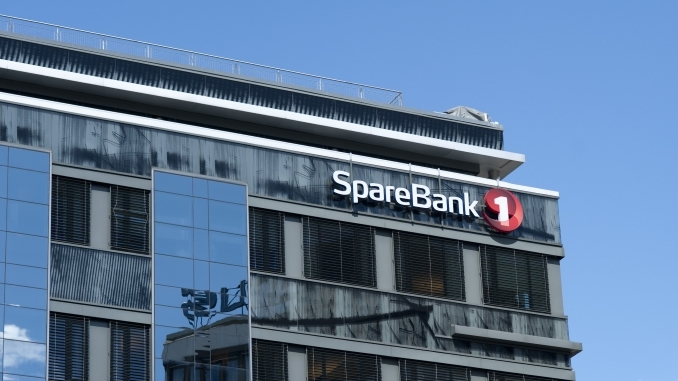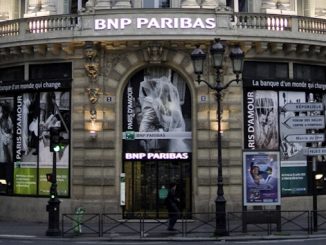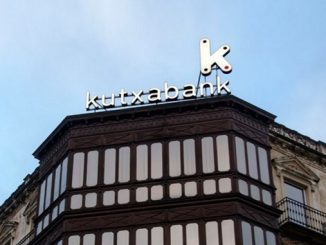
Norway’s SpareBank 1 Boligkreditt sold the largest ever green covered bond new issue in the Swedish market yesterday (Tuesday), a SEK7.5bn five year FRN made feasible by the QE-inspired strength of the krona market and the attraction of the green element, which contributed to a SEK9bn-plus order book.
The SEK7.5bn (€710m, NOK7.7bn) new issue is larger than any krona-denominated green covered bond from a Swedish issuer and also larger than a SEK3bn new issue compatriot DNB Boligkreditt sold in January 2019 that has since been tapped to take the green covered bond up to SEK9.7bn.
After announcing the trade on Monday, leads Danske, SEB and Swedbank yesterday opened books for the five year floating rate note with guidance of Stibor plus 35bp-37bp, citing a size commensurate with LCR Level 1B (around SEK5.5bn). In well under an hour books were above SEK7.5bn, and the deal was ultimately sized at SEK7.5bn and priced at plus 35bp on the back of more than SEK9bn of orders, excluding joint lead manager interest.
Eivind Hegelstad, COO and head of investor relations at SpareBank 1 Boligkreditt (SpaBol), said he was very happy with the outcome and particularly the level of demand.
“It went much better than our base case expectations and more towards our very optimistic upside expectations,” he told Sustainabonds, “so we took a size that nicely slotted into our liquidity needs and represented a nice book to bond size ratio – we didn’t have a huge allocation problem, but also didn’t take 100%.”
The new issue is SpaBol’s first benchmark covered bond in kronor.
“We have looked at SEK a few times and have issued a smaller private placement off the programme [SEK250m],” said Hegelstad (pictured), “but achieving a fair price in the Swedish market has previously been a little bit problematic because coming from the outside the Swedish market has been always associated with paying an inaugural entry price that has been a little high and so it hasn’t really worked out compared to the cost in Norwegian kroner.
 “This time was a little bit different. One was the green aspect that we were able to offer – we understand that is a sought-after format amongst the Swedish investor base. And then also the fact that the Swedish market is currently impacted by the Riksbank’s QE programme, where it has been buying covered bonds and reducing spreads, making it relatively appealing for us on a cross-currency comparison.”
“This time was a little bit different. One was the green aspect that we were able to offer – we understand that is a sought-after format amongst the Swedish investor base. And then also the fact that the Swedish market is currently impacted by the Riksbank’s QE programme, where it has been buying covered bonds and reducing spreads, making it relatively appealing for us on a cross-currency comparison.”
The pricing was equivalent to around 17bp over where domestic benchmark covered bonds such as Svenska Handelsbanken issuer Stadshypotek’s trade, and a syndicate banker at one of the leads said this was a good result for SpaBol.
“We frequently see non-domestic names coming at 15bp to more than 20bp above Stadshypotek, so 17bp is a very fair and good spread,” he said. “In the wake of the rally in Swedish covered bonds, investors are looking for something that offers a pick-up and are more willing to look at other names.”
Other Nordic investors, including Danes, also participated, and the lead banker said that “a good portion” of the book comprised orders that either reflected demand from green accounts or regular investors placing larger orders on the basis of the green element.
“The outcome is a good sign that if you really want to extract value from the green format, SEK is a very good market to choose,” he added. “In a squeezed market like we have in euros, can you even measure a green pricing benefit versus conventional covered bonds? In the SEK market it is very clearly a feature, so I think their choice to go to the SEK market was a very good one.”
SpaBol’s last euro benchmark was a €1bn 10 year in October 2019 and Hegelstad said the issuer is planning to return to euros later this year. He noted that the recovery in the euro covered bond market in the past few weeks meant that by yesterday a euro benchmark would probably have offered funding only a couple of basis points wide of the Swedish issue on an after-swap basis.
The green covered bond is only SpaBol’s second after a €1bn seven year debut in January 2018. Although the framework has not been updated, the issuer is working to also use energy performance certificates (EPCs) as the basis for residential mortgages included in the green portfolio – thus far eligibility has been based on year of construction, with Norwegian building standards meaning this can be used as a proxy for energy efficiency and thereby ensure properties are among the 15% least carbon intensive in the country.
“The EPC labels were made available,” said Hegelstad, “but there were gaps in the database, so we’ve been working on collecting that data ourselves.”
Last year SpaBol also received programmatic certification from the Climate Bonds Initiative, meaning it does not need each new issue individually certified, and replaced DNV-GL with Sustainalytics as second party opinion provider, which Hegelstad said is in anticipation of the latter becoming an approved verifier under the planned EU Green Bond Standard.



